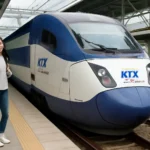The South Korean financial market, represented by the KOSDAQ (Korea Securities Dealers Automated Quotations), is a significant hub for trading tech, small-cap, and startup stocks. One unique feature of the KOSDAQ market is the KOSDAQ Side Car, a mechanism designed to limit volatility and prevent market disruption during extreme fluctuations. In this article, we’ll delve into the functioning of the KOSDAQ Side Car, the conditions for its abolition, listing requirements, and procedures, as well as explore the most actively shorted stocks and key aspects of KOSDAQ trading.
KOSDAQ Side Car
The KOSDAQ Side Car is essentially a temporary trading halt triggered when a stock experiences a significant price fluctuation within a short period, typically a 15-minute window. This system was introduced by the Korea Exchange (KRX) to maintain market stability and protect investors from irrational market behavior. During these trading halts, no orders can be placed, and prices remain frozen. Once the trading resumes, normal trading activities are allowed, and the stock may proceed at the adjusted price.
The Side Car mechanism comes into effect when stocks drop sharply—usually by more than 10%. The purpose is to allow investors time to assess the situation and prevent panic-driven trades. This system is particularly crucial in the volatile world of small-cap stocks, where rapid fluctuations are common due to market sentiment and news flow.
Conditions for the Abolition of KOSDAQ Side Car
While the Side Car has proven effective in preventing major disruptions, its continued existence is not guaranteed. Several conditions could lead to the potential abolition of this mechanism, including:
-
Improved Market Stability If the KOSDAQ market becomes more stable with fewer extreme price movements, regulators may deem the Side Car unnecessary. This could occur through enhanced market education, more liquidity, and better investor confidence.
-
Technology Advancements With the rise of automated trading systems and more sophisticated market surveillance tools, it may become easier to control volatility without the need for trading halts.
-
Alternative Market Interventions If other tools, such as circuit breakers or circuit breaker bands, become more effective in managing volatility, the Side Car could be phased out in favor of these alternatives.
Despite these potential factors, it’s important to recognize the Side Car’s role in maintaining the integrity of the market, especially for more volatile stocks that can be impacted by sudden market shocks.
KOSDAQ Listing Requirements
To get listed on the KOSDAQ, companies must meet certain criteria set by the Korea Exchange (KRX). These requirements ensure that only financially stable and well-established firms are eligible for listing. Key requirements include:
-
Minimum Capitalization A company must have a minimum market capitalization. For most companies, this is usually around 3 billion Korean won (roughly $2.4 million).
-
Financial History Companies must have at least two years of financial history, including profitability and audited financial statements.
-
Profitability The company must demonstrate a consistent profit track record, although there are exceptions for startups that show strong growth potential.
-
Shareholder Structure The company must have a sufficiently large number of shareholders to ensure liquidity, typically requiring at least 300 shareholders.
-
Corporate Governance A solid governance structure is necessary, including having independent directors and a transparent management system.
These stringent requirements help ensure that only well-established or promising companies are allowed to trade on the KOSDAQ, maintaining investor trust and market credibility.
KOSDAQ Short Selling: Top Stocks
Short selling is an investment strategy where investors bet on a stock’s price decline. The practice has been prevalent in the KOSDAQ market, with several stocks seeing significant short-selling activities. Some of the top short-selling stocks in the KOSDAQ are often those in the technology, biotechnology, and small-cap sectors, where volatility is higher, and the price fluctuations can be more dramatic.
Short selling on KOSDAQ stocks typically peaks during periods of market uncertainty, such as when a company releases disappointing earnings reports or when broader economic factors lead to a pessimistic outlook on the market. Among the most frequently shorted stocks, you’ll find biotech startups, fintech companies, and other small-cap firms that are still in their developmental stages.
KOSDAQ Listing Procedure
The listing process for a company to be listed on KOSDAQ involves several steps, ensuring that only those firms that meet the exchange’s standards are allowed to trade publicly. The procedure includes:
-
Application The first step is submitting an application to the Korea Exchange (KRX), which includes detailed financial reports and the company’s corporate governance structure.
-
Review Once the application is submitted, the KRX conducts a thorough review of the company’s financial status, business operations, and market conditions. This review process can take several weeks to months, depending on the complexity of the business.
-
Approval If the company passes the review, it receives approval for listing, and an official date for the IPO is set.
-
Public Offering The company then conducts a public offering where shares are sold to investors. This is the point at which the stock begins trading on the KOSDAQ market.
-
Post-Listing After the IPO, the company continues to comply with the KRX’s reporting and governance standards. Failure to meet these standards can lead to delisting or penalties.
This rigorous procedure ensures that only companies that adhere to KOSDAQ’s high standards are able to participate in the market, contributing to the stability and trust of the trading environment.
In conclusion, the KOSDAQ Side Car, while a relatively small feature in the broader landscape of the South Korean stock market, plays a critical role in managing volatility and maintaining market integrity. Understanding the conditions that could lead to its abolition and the comprehensive KOSDAQ listing requirements can help investors make more informed decisions. Additionally, with the complexities of short selling and listing procedures, investors must remain vigilant to ensure that their investments align with KOSDAQ’s standards and the dynamic nature of the market.






